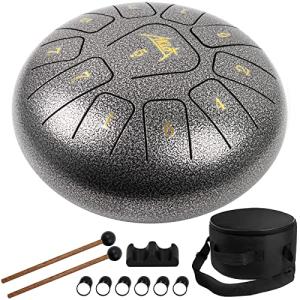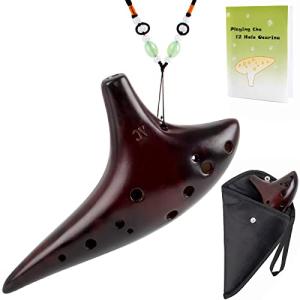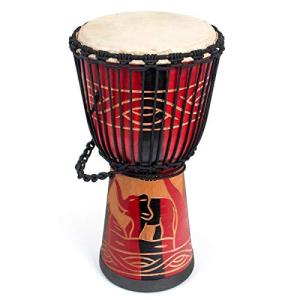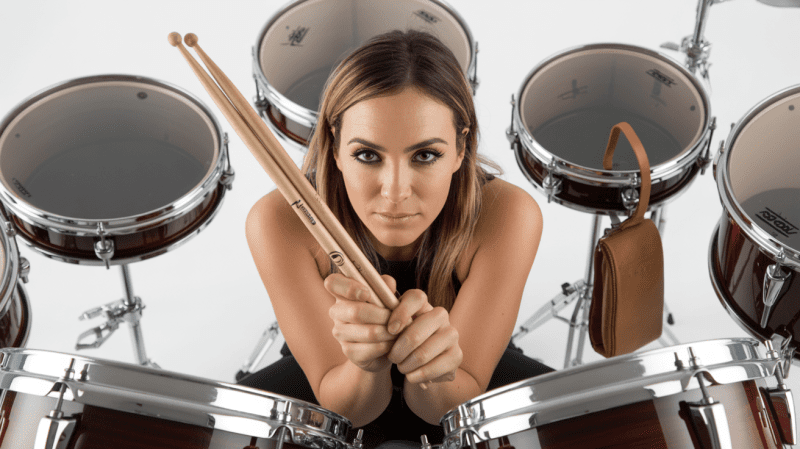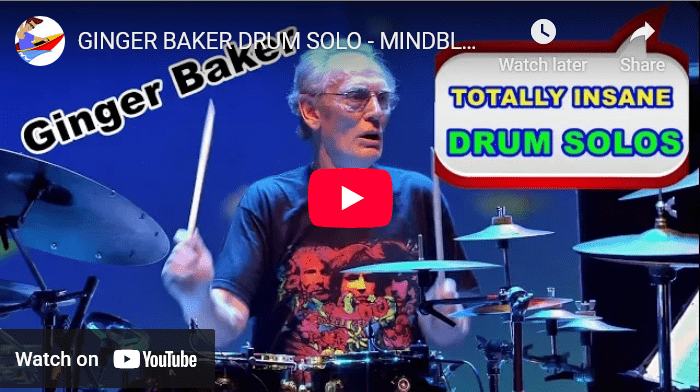Caribbean percussion has been a powerful force in shaping modern drumming. From the steady beats of reggae to the rich rhythms of Haitian Vodou, these percussive traditions have left a lasting mark on various music styles. The unique tempos and techniques of Caribbean drumming continue to influence contemporary music worldwide, making it an essential part of the modern drummer's toolkit.

Many of the instruments used in Caribbean percussion—such as conga drums and bongos—have roots in African heritage. These instruments not only produce distinctive sounds but also carry cultural significance that adds depth to the music. Understanding the historical context of these instruments helps you appreciate their impact on genres like jazz, rock, and pop.
Today, you can see the influence of Caribbean percussion in everything from mainstream pop to intricate jazz compositions. Drummers often incorporate Caribbean rhythms into their playing, creating a fusion that resonates with audiences globally. The subtle yet profound impact of these rhythms shows just how interconnected music cultures have become.
Key Takeaways
- Caribbean percussion deeply shapes modern drumming techniques.
- Instruments like conga drums have roots in African heritage.
- Modern drummers incorporate Caribbean rhythms into various genres.
Historical Context of Caribbean Percussion
Caribbean percussion is deeply influenced by African heritage and the experiences of slaves. Its development in the region led to unique rhythmic patterns and genres.
African Roots and Slave Trade Influence
The roots of Caribbean percussion trace back to Africa. Africans brought to the Caribbean as slaves carried their musical traditions with them. These included various drums and percussion instruments.
The slave trade resulted in a blend of different African cultures. This created a diverse array of rhythmic patterns and styles.
In Haiti, for example, Vodou ceremonies use drums to contact lwa (deities). These instruments are central to the rites and rituals observed by practitioners.
Development of Percussion in Caribbean Music
As African traditions mixed with local cultures, new forms of music emerged. In Cuba, Afro-Cuban music became a significant genre. It incorporated instruments such as the Conga drums and Bongos.
These instruments played vital roles in shaping modern drumming. They influenced genres like jazz, rock, and pop. The cultural heritage delivered by Cuban music illustrates the depth of this influence.
The evolution of percussion in the Caribbean was not only musical but also social. It helped preserve African heritage amidst the challenges of slavery and colonization. This rich history is still evident in Caribbean music today.
Caribbean Percussion Instruments
Caribbean percussion instruments have played a significant role in shaping modern drumming. Instruments like congas, bongos, steel pans, djembes, maracas, and cowbells each bring unique sounds and rhythms that have influenced many music styles.
Congas and Bongos
The congas and bongos are central to Afro-Caribbean music. Congas are tall, single-headed drums that produce deep and resonant tones. They usually come in sets of two or more, each tuned to different pitches to create a range of sounds.
Bongos are smaller, double-headed drums joined together and often played with the hands. They produce sharper and higher-pitched sounds compared to congas. When these drums are played together, they create a complex and rhythmic base that is essential in genres like salsa, reggae, and Afro-Cuban jazz.
Steel Pan and Djembe
The steel pan is a uniquely Caribbean instrument originating from Trinidad and Tobago. Made from oil drums, the steel pan has a distinct, melodic sound that can mimic an entire orchestra. It plays a crucial role in calypso and steelband music, where it provides both rhythm and melody.
The djembe, although originally from West Africa, has become a staple in Caribbean percussion. This drum is known for its versatile sound – deep bass notes, sharp slaps, and rich tones. The djembe is often used in drumming circles and incorporated into various Caribbean musical traditions due to its rhythmic versatility.
Maracas and Cowbells
Maracas are handheld percussion instruments made from gourds or wood and filled with seeds or beads. They produce a shaking sound when moved and are used to add a rhythmic texture to music. Maracas are a key component in Caribbean folk music and are often heard in salsa and merengue.
Cowbells are metallic instruments that produce a sharp, clanging sound when struck. They add a distinct rhythmic element to music and are often used in conjunction with other percussion instruments. In the Caribbean, cowbells are prominent in genres like mambo and cha-cha-cha, providing a steady tempo and enhancing the overall rhythm.
Percussion Techniques and Rhythms

Caribbean percussion has shaped various styles of modern drumming. You'll explore different rhythm patterns and techniques used in Afro-Cuban music, Soca, Calypso, Reggae, Merengue, and Salsa.
Afro-Cuban Rhythms and Compás
Afro-Cuban rhythms are the backbone of many Caribbean musical styles. They often feature complex polyrhythms and syncopation. The clave rhythm, either in son or rumba form, is essential. Instruments like congas, bongos, and timbales create intricate patterns.
In Afro-Cuban drumming, you use techniques like open tones, slaps, and heel-toe motions on the conga. The compás defines the musical structure, with each rhythm fitting into a specific slot. Learning these techniques gives you a solid foundation in Latin percussion.
Soca, Calypso, and Reggae
Soca and Calypso originate from Trinidad and Tobago. Their rhythms are fast-paced and upbeat, ideal for dancing. You often find yourself playing steady, driving beats on the drum set or traditional hand drums. The roll and drop techniques keep the momentum.
Reggae, from Jamaica, features slower tempos and a "one drop" rhythm. The kick drum accentuates the third beat, creating a laid-back feel. Rimshots and side-stick techniques are common. The reggae groove requires a deep focus on timing and feel.
Merengue and Salsa Beat Structures
Merengue, from the Dominican Republic, uses a 2/4 time signature. The tambora and güira are key instruments. You play fast, lively rhythms that drive the music. The double-kick and off-beat snare hits are crucial for authentic Merengue.
Salsa integrates influences from Afro-Cuban music but has a more danceable beat. The rhythm section includes congas, timbales, and bongos. Techniques like cascara (side-of-the-drum pattern) and mambo bell patterns add layers. Salsa beats are intricate and require precision and coordination.
Cultural Impact and Music Genres

Caribbean percussion has significantly shaped various music genres, including jazz, rock, hip-hop, and reggaeton. These influences highlight the cultural connections between Caribbean rhythms and other musical styles.
Influence on Jazz and Blues
Caribbean rhythms have deeply influenced jazz and blues. Musicians in New Orleans, often considered the birthplace of jazz, introduced Caribbean elements like the "Spanish Tinge." This term describes how Caribbean rhythm patterns blended with traditional jazz, creating a unique sound.
Drummers started using percussion instruments such as congas and bongos. These instruments added complex rhythms and a rich texture to jazz and blues music. As jazz evolved, the Caribbean influence persisted. Musicians like Dizzy Gillespie incorporated Afro-Cuban beats. This fusion created genres like Latin jazz, which remain popular.
Caribbean Music and Rock
Caribbean percussion also played a crucial role in the development of rock music. Early rock and roll borrowed heavily from rhythm and blues, which already had Caribbean influences. The introduction of reggae, with its off-beat rhythms, brought a new dimension to rock.
Bands like The Police and artists like Eric Clapton embraced reggae rhythms. This blending of styles produced hits that still resonate today. Reggae’s impact didn’t stop there. Ska, another genre with Caribbean roots, inspired the punk and ska-punk movements, ensuring the Caribbean influence remained prominent.
Hip-Hop and Reggaeton Evolution
Hip-hop and reggaeton are modern genres where Caribbean percussion is evident. Hip-hop, with its roots in the African American experience, incorporated Caribbean beats. DJ Kool Herc, credited with helping create hip-hop, drew from his Jamaican background, using techniques like "toasting" over beats.
Reggaeton, blending reggae, dancehall, and Latin influences, showcases the widespread reach of Caribbean percussion. Originating in Puerto Rico, reggaeton emphasizes dembow rhythms, a Caribbean beat. This genre has become a global phenomenon, influencing pop and world music.
The impact of Caribbean percussion on these genres highlights its importance. By merging with various musical styles, it continues to shape the global music scene, reflecting cultural exchanges and musical innovation.
Modern Drumming and Caribbean Percussion
Caribbean percussion has deeply influenced modern drumming through unique techniques, rhythms, and global collaboration. These elements shape contemporary music and continue to evolve.
Techniques in Contemporary Music
Caribbean percussion brought techniques like syncopation and offbeat rhythms into modern drumming. You can notice these elements in genres like Jazz, Funk, and Hip-Hop. Hand drumming techniques from congas and bongos have added depth and diversity to drum patterns. Drummers now often incorporate these methods into their sets, using instruments like the djembe and timbales to create dynamic sounds. This blend of styles enhances unity and communication in music creation, making rhythms more engaging and complex.
Caribbean Rhythms in Pop Culture
Caribbean rhythms have a significant presence in pop culture. Reggae, with its signature offbeat rhythms and steady tempo, has influenced mainstream artists like Bob Marley and newer acts like Rihanna. Dancehall beats shape popular music, making them a staple in clubs and radio hits. Afro-Cuban music's clave rhythms are another essential element, seen in Latin Pop and beyond. These rhythms provide a distinctive groove that captivates listeners and drives many modern songs.
Global Spread and Musical Collaboration
The global spread of Caribbean percussion has led to rich musical collaborations. Drummers from different cultures learn and adapt these rhythms, creating a fusion of sounds. In Miami, you can witness the impact of Haitian percussion, which blends African and Caribbean traditions in Vodou ceremonies. This cultural exchange promotes both unity and innovation in music. Musicians collaborate across borders, enhancing their styles with Caribbean beats, which demonstrates the tangible impact the region’s drumming traditions have had worldwide.
Frequently Asked Questions
Caribbean percussion has shaped many aspects of modern drumming, influencing techniques, genres, and prominent musicians. Its impact on jazz, rock, and other popular music styles is profound and continues to be felt today.
What is the historical significance of Caribbean percussion in modern drumming styles?
Caribbean percussion has deep roots in African musical traditions, which were brought to the Caribbean through the transatlantic slave trade. Instruments like congas and bongos have significantly influenced modern drumming by introducing unique rhythms and techniques.
Which Caribbean percussion instruments have had the most impact on modern drumming techniques?
The conga drums and bongos are among the most influential Caribbean percussion instruments. These drums have been widely adopted in genres like jazz, rock, and pop, contributing to the development of diverse drumming styles.
How has Caribbean drumming influenced the development of specific modern music genres?
Caribbean drumming has played a crucial role in the evolution of genres such as reggae, ska, and Afro-Cuban jazz. Its rhythmic patterns and percussion techniques have been incorporated into these styles, creating distinctive sounds that define each genre.
Can the roots of any contemporary drumming rhythms be traced back to Caribbean traditions?
Yes, many contemporary drumming rhythms can be traced back to Caribbean traditions. For example, the "one drop" rhythm in reggae music is heavily influenced by African and Caribbean drumming patterns.
Who are some influential musicians that have incorporated Caribbean percussion into modern drumming?
Musicians like Mongo Santamaria and Lloyd Knibb have been instrumental in bringing Caribbean percussion to the forefront of modern drumming. Their innovative styles have inspired countless drummers around the world.
In what ways has Caribbean drumming shaped the role of percussion in jazz and other popular music forms?
Caribbean drumming has added new layers of complexity and expression to jazz and other popular music forms. Rhythms from the Caribbean have enriched the percussive elements of these genres, allowing drummers to explore new creative possibilities.
